Featured Interview – Atam Dhawan
Atam Dhawan, Ph.D., was Chair of the IEEE EMBS Special Topic Conference on Point-Of-Care Technologies. In this video clip, Dr. Dhawan speaks to us on expected breakthroughs in POCT in the next decade, along with his thoughts on where more effort should be directed. He also discusses the implications of differences and similarities in healthcare needs in developed and developing countries.
IEEE.tv:
Please define point-of-care technology for us and give us an example.
Atam P. Dhawan
NJIT, Professor of Biomedical Science
Point-of-care healthcare technologies are those devices, or the protocols, that the patient can use with minimal or no interaction from the physician and health care provider to acquire the data that is of clinical use and significance. So, for example, if there is a mass screening of the infection, something like bird flu or HIV breaks out, since everybody in a society cannot be seen by the physician at the same time, the people could have this little device with the bio-markers associated with [the disease] to actually test themselves. Now, in many cases, this is not a new concept. I think a little strip for the pregnancy test that can tell a woman whether she is pregnant or not, in the comfort of her home, was the first most successful point-of-care healthcare technology. The second is the blood glucose meter. Of course, it requires a drop of blood, and sometimes the patient feels pain about it and may go out of compliance and stop using it, but that is another example of point-of-care technology. From patient to hospital, the entire spectrum is not a one step change. In today’s society, from patient home there are nursing stations, web-based resources, then there are urgent care facilities, health care provider offices, and then there are emergency rooms and hospitals. So the point-of-care technology is actually a common thread from the patient home to the health care facility, whether that health care facility is a nursing station or that facility is an emergency care unit of a hospital. So the point-of-care technologies not only can be used by the patients in the comfort of their home for monitoring, but can also as a quick test in the mid-healthcare facilities, such as a physician’s office or nursing station.
IEEE.tv:
Developing countries and developed countries have different healthcare needs. How can point-of-care technologies meet these different sets of needs?
Atam P. Dhawan
So I think the first step in that particular direction is bringing people from all sectors, and from all parts of the globe, together in the same venue. We need to learn from each other what are the challenges in developing the developing economies versus developed economies for improving patient health care. We also need to understand what are the difficulties with respect to the cost, with respect to deployment, with respect to patient acceptance for these point-of-care health care technologies in developing countries versus developed countries. Even though the common thread is better, affordable, quality health care, the mechanism that leads to that particular health care goal is based on the social environment, is based on the local economic structure, is based on the local infrastructure to provide the health care facilities, and also in terms of some psychological and emotional factors.
IEEE.tv:
So, a more effective health care system doesn’t imply more expensive care?
Atam P. Dhawan
People get surprised when I tell them that health care costs in Japan are less than half of the health care cost, per capita, in the United States, but life expectancy in Japan is significantly higher than in the United States. So that tells us that simply providing a costly, quality health care [system] is not the solution. There has to be patient a education, and the patient’s role must be re-defined for preventive medicine and personalized medicine that will improve the quality [and efficiency] of healthcare [delivery].
IEEE.tv:
Do you see areas where you wish more engineering effort was being expended in order to improve health care delivery?
Atam P. Dhawan
Right now, there is an awareness that has started to make an impact in health care. This particular attendance in the first ever IEEE Point-of-Care Healthcare Technologies conference is proof of that. Many of the medical device companies are now looking into manufacturing the devices which are point-of-care technology related that can be brought out to the patients at the lowest possible cost. As I said before, diabetes is one of the major global health care concerns. Hypertension is another major global health care concern. Even though in developed economies we talk about cancer, which is a global concern, cancers do not come in the same serial order as they appear as the causes of death in developing countries versus developed countries. For instance, in developing countries lung cancer, and the oral cancers are the top of the list. In developed countries breast cancer and prostate cancer are the top of the list. So, when we look across the globe we find that the specific critical needs are different, and they are based on geo-environmental risk factors, socio-economic conditions, and on the lifestyle and personal beliefs of that particular society, which are very different. Therefore, in order to create a strategic plan, we need to bring everybody together. We need to look into it more globally, in the sense that, OK, for one part of the world we may be requiring that HIV is the most significant issue to address through point-of-care technology; on another side of the globe we will find infectious diseases, like malaria, are the topmost cause that we need to work on. On another side of the globe it may be that hypertension and strokes, they are the one that we need to address. So, I think that this is also part of the challenge, because here is not one single area that you can just put all of your efforts into, there is a complete spectrum, and we need to work in each one of those areas.
IEEE.tv:
What technology would you like to see developed in the next decade?
Atam P. Dhawan
It is very important to identify some of the critical diseases before they get to the point where they are either incurable, or they are very difficult to manage clinically. Now, whether they are related to the HIV viruses, immune system, or they are related to neuro-degenerative diseases, or they are related to infectious diseases, it is very important to produce those low-cost devices, with bio-markers, so that the people can scan themselves and provide the data towards early symptoms of critical diseases. So, if I had to give a message, and a challenge to biomedical researchers, that would be to create these bio-markers for the specific critical diseases for early diagnosis. Now, again, as I said, this is a general statement. General in the sense that there is not one single global health care challenge that can be identified and say, OK, just work on the hypertension, or just work on the diabetes, or the HIV or infectious diseases. It is a spectrum of those illnesses, because their priorities and their impact in their respective societies are different.
IEEE.tv:
Finally, why is the point-of-care technology area important for you, personally?
Atam P. Dhawan
I had a great fascination about the technology. The other thing was that I also saw the health care concerns all around me when I was growing up. In my family, in my neighborhood; and I saw people suffering a lot. And I also saw that [many] people [were] not being taken care of, because of their personal or social beliefs, or the socio-economic restrictions and limitations. So, even though I started my baccalaureate degree in electrical engineering and computer science, I wanted to get into the field of medicine and this is what I did at the graduate level. And at that particular time, when I started using non-invasive optical technologies, and proposed a mass screening device for skin cancer detection, people thought I was crazy. But, as I looked into those concerns, it was clear to me that the only way to make the practice of medicine better, and to provide better health care, is the use of more and more technological tools. It was clear in the 20th century, in radiological sciences, that computer tomography, MRI, and ultrasound made a revolutionary impact in the field of medicine. So, now it makes perfect sense to extend those technological tools toward the patient so that the gap between the patients and the clinician becomes shorter; and not only shorter it becomes a communication channel, two-way communication channel to provide the best health care.







 Nitish V. Thakor is a Professor of Biomedical Engineering at Johns Hopkins University, Baltimore, USA, as well as the Director of the newly formed institute for neurotechnology, SiNAPSE, at the National University of Singapore.
Nitish V. Thakor is a Professor of Biomedical Engineering at Johns Hopkins University, Baltimore, USA, as well as the Director of the newly formed institute for neurotechnology, SiNAPSE, at the National University of Singapore. 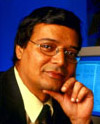 Atam Dhawan, Ph.D. obtained his B.Eng. and M. Eng. degrees in Electrical Engineering from the University of Roorkee, Roorkee, India...
Atam Dhawan, Ph.D. obtained his B.Eng. and M. Eng. degrees in Electrical Engineering from the University of Roorkee, Roorkee, India... 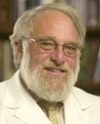 Clifford Dacso, MD, MPH, MBA is Professor of Molecular and Cell Biology and Medicine at Baylor College of Medicine, John S. Dunn Sr. Research Chair in General...
Clifford Dacso, MD, MPH, MBA is Professor of Molecular and Cell Biology and Medicine at Baylor College of Medicine, John S. Dunn Sr. Research Chair in General... 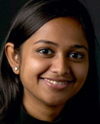 Ritu Kamal works at Stanford Biodesign Program, Stanford, CA, as a Global Research Project Manager. She has previously worked at Roche Diagnostics as a Scientist and was a 2010...
Ritu Kamal works at Stanford Biodesign Program, Stanford, CA, as a Global Research Project Manager. She has previously worked at Roche Diagnostics as a Scientist and was a 2010...  Christine Kurihara is Manager of Special Projects, for the Stanford Biodesign Program, Stanford, CA. In this capacity, she oversees IT, web and infrastructure projects for the program.
Christine Kurihara is Manager of Special Projects, for the Stanford Biodesign Program, Stanford, CA. In this capacity, she oversees IT, web and infrastructure projects for the program. 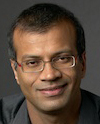 Dr. Anurag Mairal is the Director, Global Exchange Programs, Stanford University, Stanford, CA. In this role, he is responsible for developing an extensive network...
Dr. Anurag Mairal is the Director, Global Exchange Programs, Stanford University, Stanford, CA. In this role, he is responsible for developing an extensive network... 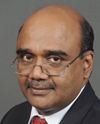 Dr. T. Sunder is a Senior Consultant Cardiothoracic and Transplant Surgeon in Apollo Hospitals, Chennai, India with over 20 years' experience in Cardiothoracic Surgery...
Dr. T. Sunder is a Senior Consultant Cardiothoracic and Transplant Surgeon in Apollo Hospitals, Chennai, India with over 20 years' experience in Cardiothoracic Surgery...